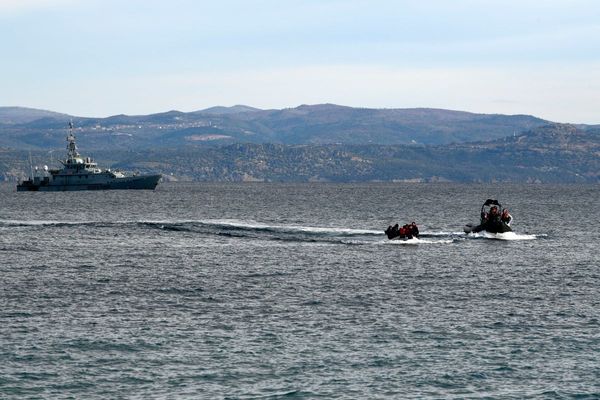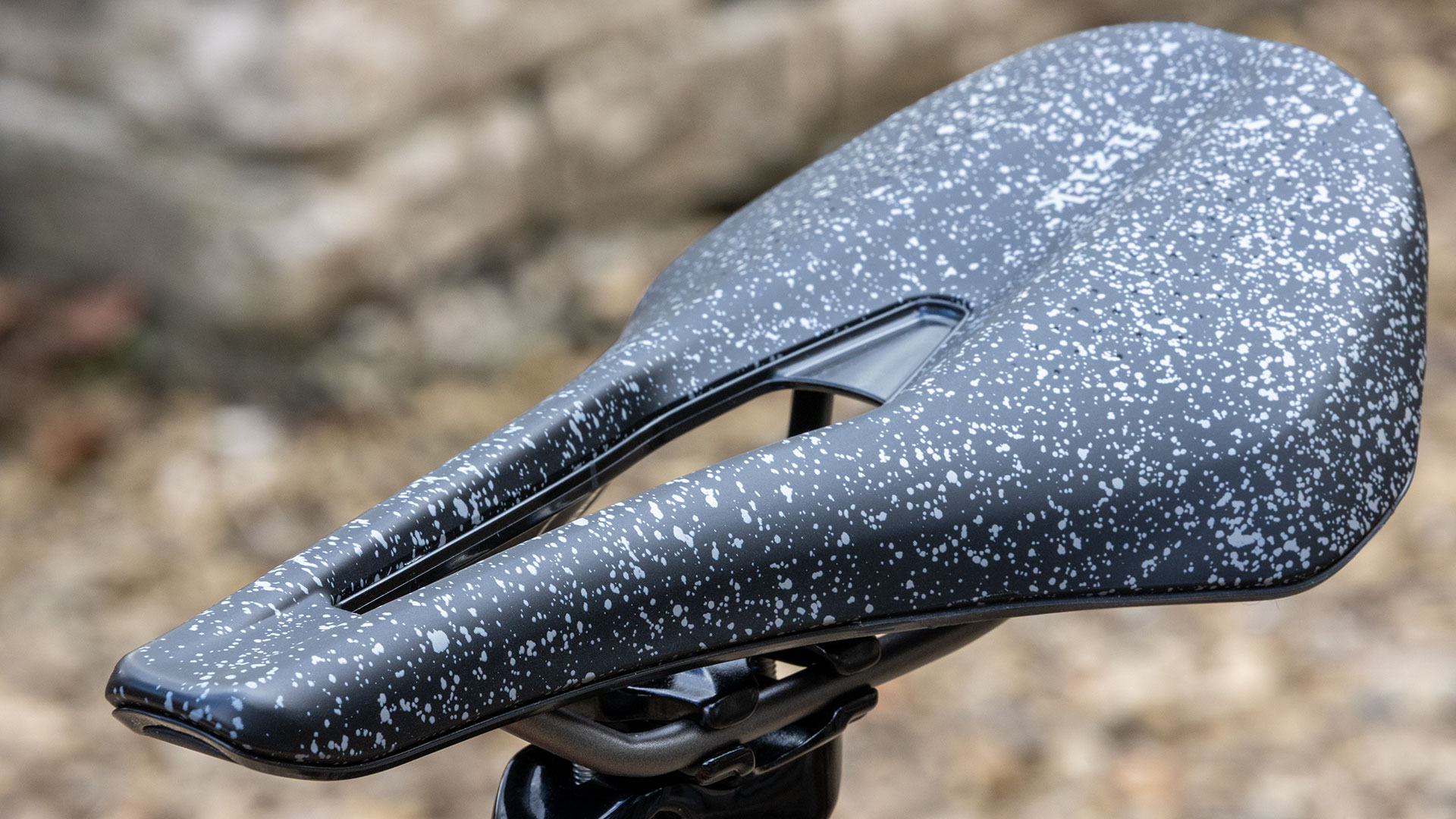
This special edition saddle is part of Fizik’s Les Classiques collection, the brand’s homage to the Spring Classics that also includes a pair of paint effect mud-splattered Tempo Overcurve R4 shoes and rolls of flecked Tempo Bondcush bar tape.
Curiously, Fizik has chosen to celebrate these harsh early races with one of its endurance models rather than a full-on race saddle. However, in the highly unlikely event that I was to ride a savage Monument, such as Paris-Roubaix, I’d want to lavish as much comfort on my derrière as humanly possible. So, it’s not an unwelcome surprise.
Construction
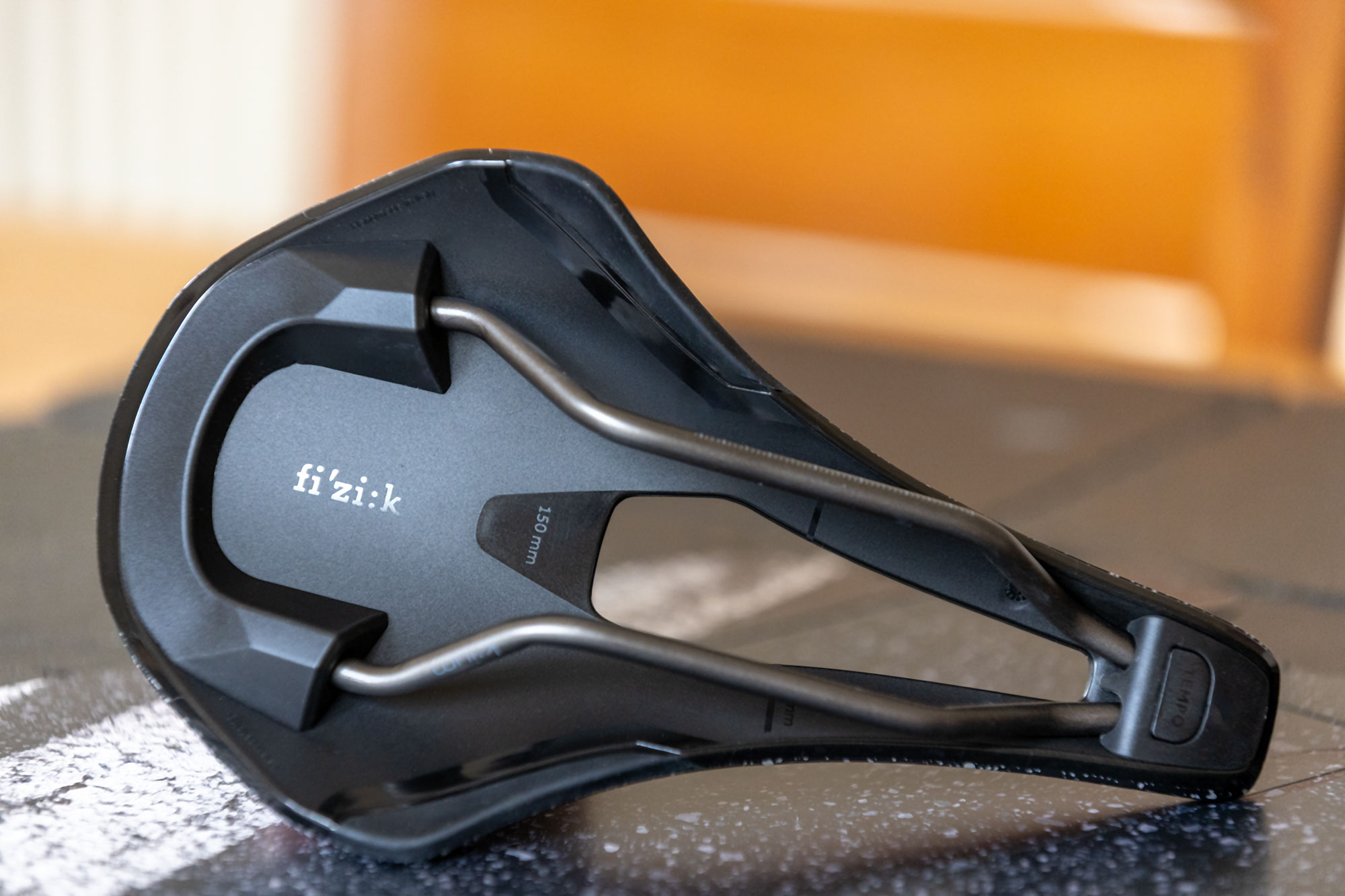
Fizik’s Tempo Argo R3 Les Classiques saddle is near-identical to a regular Tempo Argo R3, the only difference being the paint effect, which I rather like. Perhaps I’m being overly sappy, but I believe a dash of theatre enhances this perch by introducing a touch of much-needed fun.
Talking of touch, the Tempo Argo has more padding than its similar-looking stablemate, the Vento Argo. It’s easy to confuse the two, but the Vento is Fizik’s short-nosed, race-inspired saddle that features less padding, narrower width options – 140mm and 150mm vs the Tempo’s 150mm and 160mm – and a slightly narrower, more tapered nose with a subtle drop. Essentially, the Vento has been developed for riders wanting to assume a lower, more stretched-out aero stance on the bike, whereas the Tempo encourages a slightly more upright endurance position. However, both are performance saddles suitable for long, fast rides.
The Tempo Argo is available in three different versions: the premium carbon-railed R1, the Kium hollow-railed R3, which is the focus of this review, and the less expensive but hardly entry-level alloy-railed R5. They weigh a claimed 195g, 229g and 241g respectively, for a 150mm width.
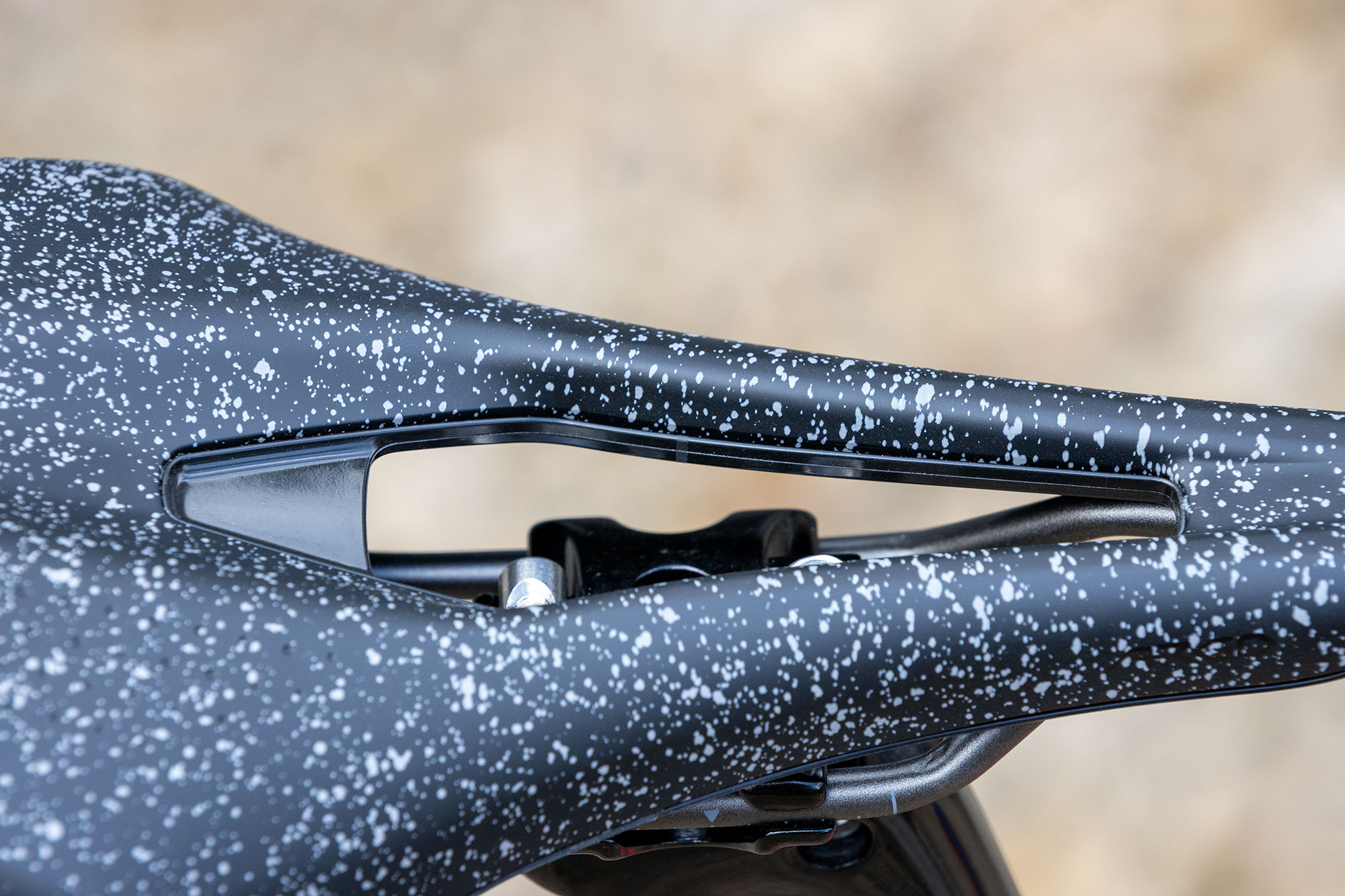
This is a very contemporary-looking saddle that’s blessed with a somewhat brutal aesthetic that’s neither delicate nor pretty. Three features dominate: the relatively short 260mm length, the flexible, rubberised ‘wings’ and the wide diamond-shaped relief channel that Fizik says was developed using detailed pressure analysis and insights from medical experts. The conspicuously blunt nose tip is fairly chunky at approx. 38mm, which should provide more comfort, control and security when ‘on the rivet’.
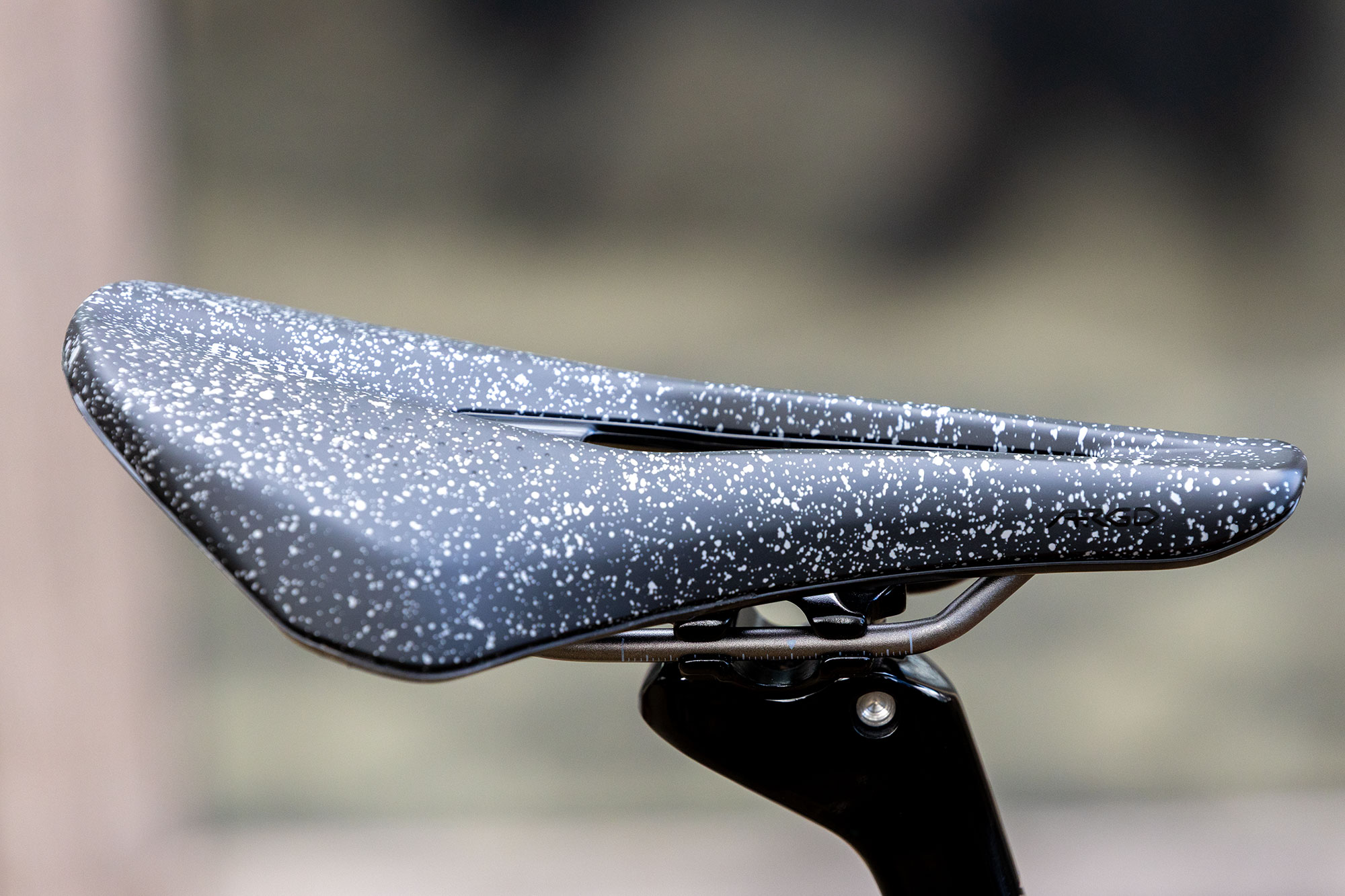
To the casual eye, the Tempo Argo is predominately flat, but it actually exhibits a very subtle rise – about 10° – starting from the mid-section to the back. I’d guess this is to accommodate additional padding for the sit bones, and to arrest any backward slip when putting the power down.
Fizik says it’s used its proprietary Type 2 foam here, which is slightly softer and more progressive than the material used on its racing saddles. The thickness varies slightly, with more around the mid-section to support and secure the ischial sit bones.
It may be plusher than the Vento Argo, but the padding is still quite firm.
The foam is secured directly to a carbon-reinforced nylon shell that, in the case of the R3, rests on hollow 7 x 7mm Kium rails. Kium is a propriety alloy from Fizik that it says is lighter than titanium but shares similar dampening properties.
The Ride
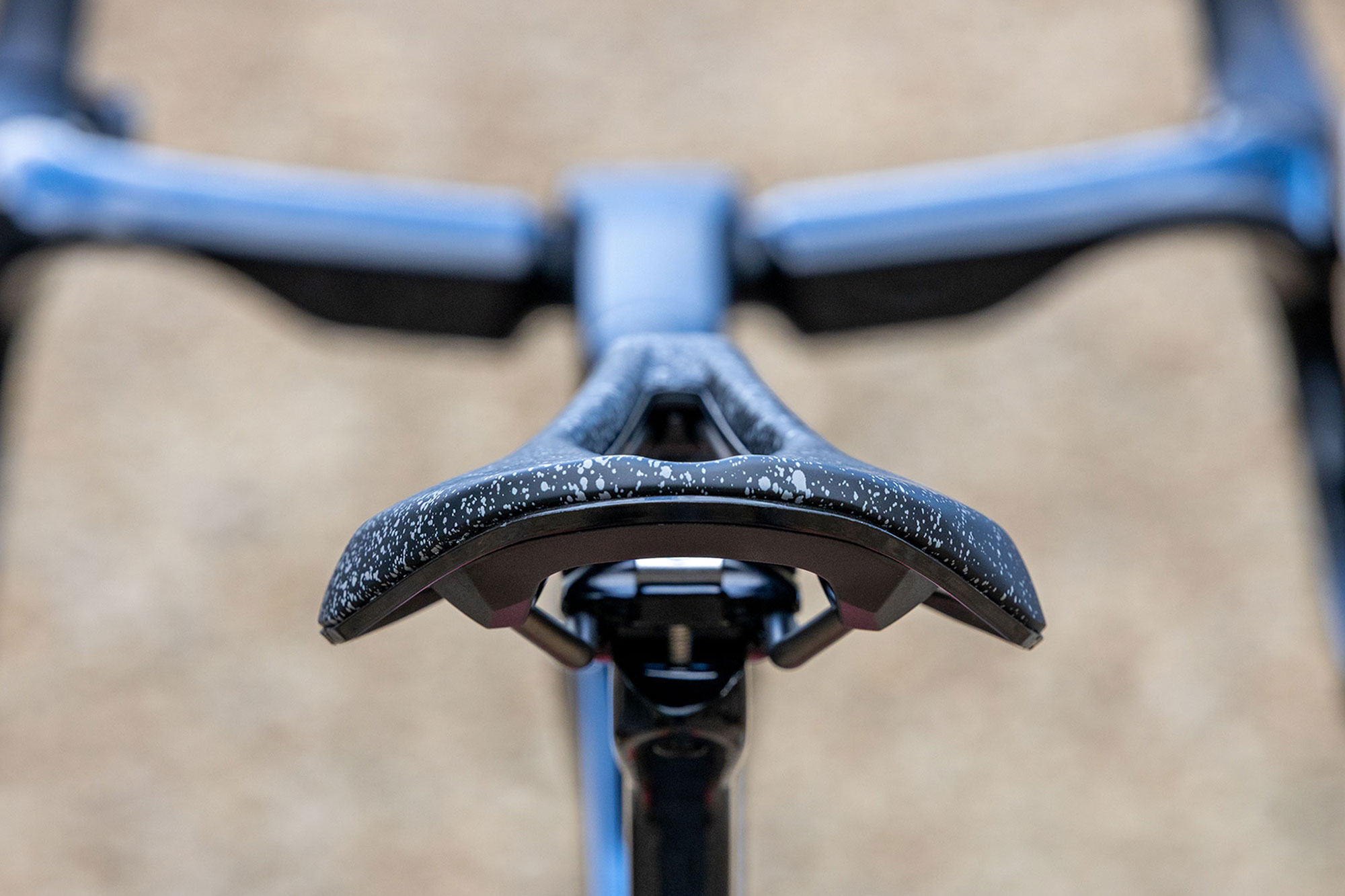
I’m a big fan of the Tempo Argo because, put crudely, it has saved my arse in the past. A while ago, I attended a bike launch near Girona, where the host brand led the press on a six-hour ride into the local hills to showcase its new endurance bike. It was an epic day on an unfamiliar bike, made all the more remarkable because nobody complained of any discomfort. I was so impressed with the ride that the name of the saddle has stuck with me ever since – Fizik Tempo Argo R3.
The Tempo Argo’s comparatively wide stance – I’ve been testing the narrower 150mm version – is perfect for the kind of fast endurance rides that find me sitting up a little taller for the sake of long-term comfort. However, when descending or tucking out of the wind, the short front and vast cutout allow me to adopt an aggressive position without suffering.
A wide fit can, of course, lead to chafing, but fortunately, I haven’t found this to be the case with the Tempo Argo. This could be because the saddle really isn’t that wide, or perhaps Fizik’s Wingflex feature deserves some credit. The carbon-reinforced nylon shell has little rubber inserts at the tips that cushion the rider’s thighs on every pedal stroke, but not to the extent they rob watts. Truthfully, while it was easy to flex the shell wings with my hands, I couldn’t discern any movement during my rides. Not that it matters since I remained comfortable, but your mileage may differ.
As previously mentioned, the padding feels quite dense and unyielding but that’s the way I like it on an endurance saddle. There is noticeably more cushion to support the sit bones, which together with the subtle rearward tilt, help to lightly lock the riding position in place.
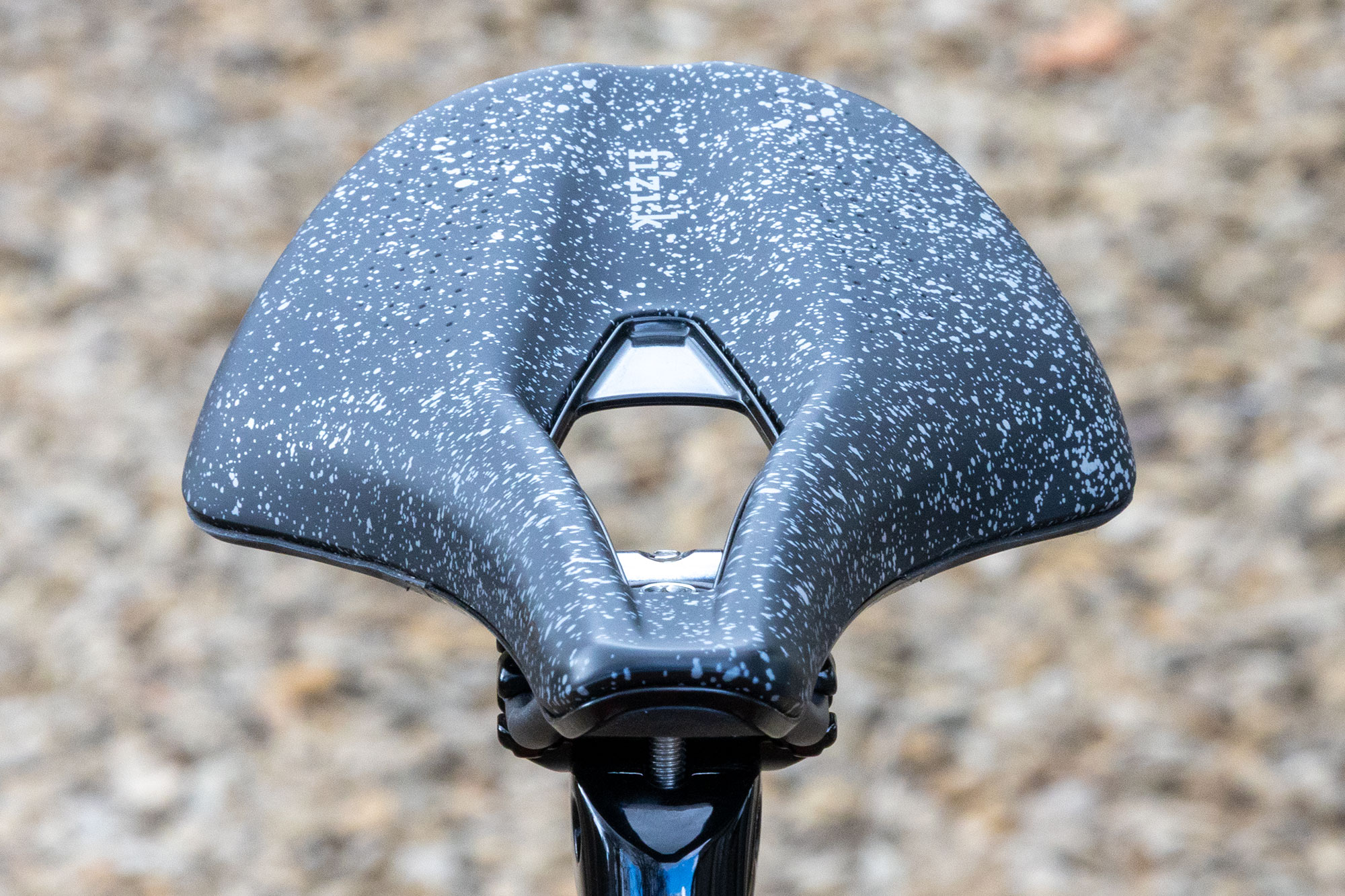
Unsurprisingly, there’s little scope to move around on a saddle as short as this, but when you do want to shift position, the faux leather cover won’t hold you back. Perhaps it’s just me, but I dislike the grippy, rubberised material that covers some contemporary saddles. Every time I want to move my weight back or forth, I seem to be forever snagging the seat of my riding shorts. I found the Tempo Argo smooth enough to get a glide on yet just about grippy enough not to be full-on slippery. Of course, this is a personal preference that’s entirely subjective, so you may prefer to be more securely held in place.
I tried this saddle on a variety of bikes, including a stiff, aluminium-framed Standert Kreissäge RS, a moderately stiff Ribble Allroad SL R endurance bike and a compliant Wilier Jena gravel bike. I’d be lying if I told you I could tell the difference between Kium rails and standard alloy rails. Carbon rails? Perhaps, but frankly the frame, wheel choice and, most notably, tyre choice influence ride quality so much more than the makeup of your saddle rails. Kium does, however, bring a moderate weight saving, which will be important to many.
Value and conclusions

Let’s start with a huge caveat. The best saddle for you is the one that fits, so even though I loved my time with the Fizik Tempo Argo R3, you may find it a complete pain in the proverbial. That’s the nature of saddles.
Short saddles with big cutouts are very popular right now, and I’m a devotee because they’re a great match for me and my riding. However, they’re not without their faults, the most significant being a lack of control – it’s harder to steer the bike through the hips – and they’re a very restrictive platform if you like to move around on the saddle.
That said, if you’ve got your heart set on a short-nosed saddle, the Tempo Argo R3, which retails for £149.99/$159.99 should make your shortlist. The obvious competitor is Specialized’s Power, which is shorter at 240mm and available in more width options: 143mm, 155mm and 168mm. The titanium-railed Power Arc Expert is slightly cheaper than the Fizik at £115/$159.99.
The Prologo Dimension 143 with Tirox (steel-alloy) rails is another comparable short-nosed saddle that is also slightly cheaper at £139/$139. I recommend experimenting with some samples before purchasing the one that fits you best.
Specs
- Length: 260 mm
- Width: 150 mm or 160mm
- Weight: 229g/235g claimed. My 150mm saddle weighed 240g.
- Height at 75mm width: 43 mm
- Length from nose to 75mm width: 103 mm
- Rail: 7x7 mm
- Shell: carbon-reinforced nylon with flexible rubberised wings
- Padding: Proprietary Type 2 foam
- Shape: Flat




